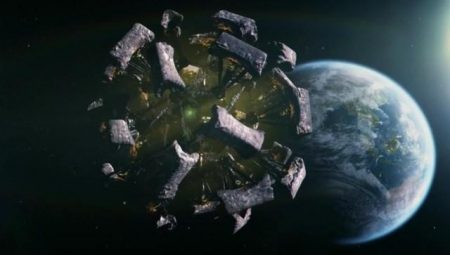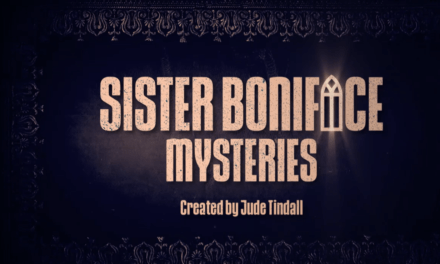Doctor Who (BBC 1963-89, 1996, 2005- ) has attracted much attention on this blog (see here, here and here for recent examples). In this post, I’m going to engage with the series to push back against TV Studies’ implied ‘zone of liveness’ by analysing one episode as a case study – ‘Dinosaurs on a Spaceship’ (2012) – for the purpose of demonstrating how employing emergent and alternative theoretical perspectives can prompt re-evaluation of a story which is often maligned within (aca-)fan discourse. Those arguments are anthropologist Brian Noble’s (2016) concerning dinosaurian imagery in scientific and popular culture.
A Little Context
This post’s origins lie in my ongoing research into television, popular culture and nostalgia. Recently this has led me towards considering intersections between these debates and mediations of dinosaurs. However, the relationship between nostalgia and the dinosaurian may not immediately appear since, as Fred Davis (1979: 60) has argued, we think about nostalgia in terms of generational identities where objects and artefacts from previously-experienced eras – especially childhood and youth – become loci for affective longing. In contrast, dinosaurs are representative of what geologist James Hutton (1788) referred to as ‘deep time’ or the ‘past’ of millions of years ago of which we have no direct experience. As palaeontologist Kenneth Lacovara (2017: 55) argues, the Triassic, Jurassic and Cretaceous periods which dinosaurs populated appear “unfathomable” to human perceptions as “Grapppling with deep time is one of the epic struggles in the ascendancy of humanity.” (Lacovara 2017: 55).
In contrast, W.J.T. Mitchell (1998: 68) argues that dinosaurs are “associated with childhood, old age, and everything in between”. Mitchell therefore implies two significant points: firstly, that whilst dinosaurs are scientifically-associated with temporal distance due to being embedded in deep time, they are culturally-rooted within the personal experiences of (Western) children. Secondly, whilst “[t]here is a widespread assumption that all children love dinosaurs” (Mitchell 1998: 231), this understanding should not overlook either the enduring or intergenerational appeal that dinosaurs offer to social groupings like families, friendships or fan communities (Chiarelli 2018). It is the ongoing presence of dinosaurian imagery across popular culture that contributes towards nostalgic readings.
However, this blog is not specifically about nostalgia and dinosaurian representations. Instead I would like to pull back to tackle a broader issue arising out of the above summary which is the separating out of ‘cultural’ and ‘scientific’ representations. Although some academics writing for (popular) scientific audiences have supported this distinction (see Hone 2016), Noble’s arguments concerning ‘the Mezosoic’ and the ‘lost world’ as chronotopic constructions usefully complicate such divisions. Such thinking requires approaching ‘the Mesozoic’ and ‘the lost world’ from an inter-disciplinary perspective where:
These fields of containment form a nexus for concentrating meanings, fossils, techniques, and practices in an intelligible, visible form. Since the later nineteenth century, with dinosaurs well entailed by palaeontological description, they have become, along one axis, normalized matters of natural fact known from the ongoing studying of specimens. Along a second axis, they are still widely used as spectacles and as figures in science fiction, continuing to borrow on the figurative effect as monsters, giants, and “terrifying” creatures – witness Hollywood’s long tradition of giant reptilian monster movies. The dinosaur in spectacle and publicly consumable form is mobilized across an amazing array of sites and media, from popular books and toys to cartoons, kitsch, the internet, and school programs. (Noble 2016: 16-17)
Constructions of prehistoric time-spaces, whether ‘factual’ or ‘fictional’, are readable as instances of what Noble (2016: 7; original emphasis) names “Mesozoic Performativity”. Mesozoic performativity is “where both science-authorized and more imaginative, fictional manifestations of dinosaurian nature have depended upon locating and materializing ever-refined and altered forms of dinosaurs in time and space”. Noble therefore insightfully posits these two fields of discursive construction as deeply interconnected and mutually reinforcing rather than dismissing prehistoric imagery in popular culture as ‘pure entertainment’ and detached from ‘serious’ scientific research.
Spaceships as a ‘Lost World’
The diegesis of ‘Dinosaurs on a Spaceship’ is clearly informed by a Mesozoic chronotope despite the episode’s far-future setting of 2367. The visual design of the titular spaceship’s exterior suggests an ‘organic’ nature and hence resonates intertextually with an Earth-based ‘lost world’. For example, its spherical shape challenges generic expectations of futuristic spacecraft and so suggests that the ship might be an astronomic entity returning to Earth (Figure 1). The craft’s archaic nature within the far-future is also further underscored by the Doctor’s (Matt Smith) statement that this is a ‘vast old ship’ as well as how its design juxtaposes with that of Soloman’s (the episode’s villain played by David Bradley) vessel as the sleek, gleaming lines of the latter position it as futuristic and man-made.
A Mesozoic chronotope also informs the visual design of the ship’s interiors. At one point Amy (Karen Gillan) observes that ‘a bit of weedkiller wouldn’t go amiss in here’ highlighting how the Ark’s dark and dusty spaces, which are littered with overgrown fauna and cobwebs, connote the craft’s ‘old’ and abandoned status at the same time as it’s organic nature. Perhaps more memorable, though, is the sequence when the Doctor, Rory (Arthur Darvill) and Brian (Mark Williams) journey to the Ark’s engine room. This setting immediately suggests that the characters have transitioned to a new, external location because of the beach setting (Figure 2). However, the reveal that this is an internal location on the spaceship, shortly to be revealed as a Silurian Ark, connotes a further hybridization of ‘nature’ and ‘culture’ where organic hydro resources are harnessed to power the interstellar flight of the Silurian ‘civilization’.
The titular spaceship’s internal and external appearance therefore construct this a diegetic space for Mesozoic performativity. That is, the Ark is positioned as an ‘old’ and ‘lost’ location which has suddenly (re-)appeared and serves as a site for narratives of dinosaurian encounters, exploration and adventure. However, whilst being informed by these discourses, analysis of the episode’s narrative world also points towards a limitation in Noble’s arguments when these are combined with how TV Studies has read textual material.
This is because substituting an Earth-based island or plateau for a striking and anachronistic space vehicle points towards how institutionally- and historically-located branding requirements have impact upon how Doctor Who has appropriated Mesozoic discourses at this point in time. Hills (2010b: 220) argues that “new Who has been textually positioned as ‘high-concept’ TV …where each story can be summarised in a ‘hook’ sentence for publicity purposes” as a way of appealing to industrially-imagined ‘mainstream’ audiences. The episode’s title, which is repeated by the Doctor just before the title sequence and lends itself towards being reproduced in trailers and promos, serves these purposes at the same time as reinforcing the programme’s public images for offering unconventional juxtapositions of genre codes and/or the quotidian.
Ideological Dinosaur Encounters
What roles and meanings are assigned to the dinosaurs which inhabit this example of a lost world in Doctor Who? Writing on Sir Arthur Conan Doyle’s novel The Lost World (1998 [1912]), Noble (2016: 57) argues that these creatures perform ideological functions which test, and ultimately prove, the superiority of man (read as white English masculinity) over Earth’s previous dominant species:
Returning specifically to the dinosaurs of The Lost World again, they appear as a materially sourced, if phantasically animated challenge to be taken on by Doyle’s team of adventurers in order to further assure the fullness of their masculinity. He effectively uses the saurian as an oppositional episteme of fear and encounter, a foil and contrast to his heroic English figures of bravery and manhood.
‘Dinosaurs on a Spaceship’ mobilises these ideas from the introduction of its prehistoric creatures onwards. The first species encountered are duo of unruly Ankylosaurus who barge into each other and who the Doctor advises his assembled team to run from as they unrelentingly charge towards them. The immediate suggestion is that the ship’s dinosaurs will present threats to the human character’s survival but that, as the team’s hiding from the Ankylosaurs connotes, humanity is ultimately better organized than their saurian predecessors. Of course, ‘Dinosaurs on a Spaceship’ largely displaces this coding of dinosaurs-as-threat by shifting the construction of villainy on to discourses of economic ideologies where Solomon views everything and everyone as a commodity and object that can be sold for profit.
Nevertheless, the dinosaurs coding as ‘disruptive nature’ endures until the episode’s end as signified by the confrontation between (fictional) early 20th century Great White Hunter-type John Riddell (Rupert Graves), Amy, and a pack of velociraptors. On first inspection, the coding of this sequence may appear to challenge Noble’s (2016: 52) argument that ‘lost world narratives’ represent “tale[s] of the imperial and colonial adventure networks of male bonding – that is, of an ardent homosociality.” Amy’s inclusion in the confrontation with the raptors could be read as a shift in these ideologies over time, alluding to the dynamic nature of Mesozoic discourses and a gender-progressive (albeit coded as white) attitude pervading Doctor Who; when Riddell questions Amy’s volunteering for the task, the character states that she’s ‘easily worth two men’. This alludes to Amy’s transgressive status within the episode’s gender representations more generally as the character continually challenges Riddell on his outdated sexist attitudes, demonstrates agency by using the ship’s computers to better understand what’s happened to the Silurians, and voices support for female-orientated history through her knowledge of and respect for Queen Nefertiti (Riann Steele).
Despite Amy’s postfeminist action heroine codings, the emphasis on masculinised homosociality remains central to overcoming the dinosaurian threat and reasserting the primacy of humanity in this sequence. After all, it is arguably by behaving like ‘one of the boys’ by taking up a tranquilizer gun to tackle the marauding and uncivilized raptors that Amy gains Riddell’s respect. What’s more, there is a sense that Riddell remains in charge during this sequence as it is his character who advises her to ‘duck’ so that a velociraptor can be taken out therefore positioning Riddell as the more-skilled fighter. Despite demonstrating equality in this sequence regarding who gets to take on the dinosaurian threat, then, group identity is constructed in accordance with values that are diegetically coded as masculinised.
Returning to the episode’s representations of dinosaurs, alongside being constructed as boisterous cyphers which allow for man’s superior status to be reaffirmed is the contrasting characterisation of ‘Tricey’ the Triceratops. Unlike the Ankylosaurs and Velociraptors, Tricey is ‘uncivilised’ but, crucially, unthreatening. Echoing Gertie the Dinosaur (1914), Tricey is coded as a domestic pet with a view to targeting child audiences (see Sanz 2002: 18-19). For example, Tricey shows affection for Brian by licking his face and seeking out a treat (a grass-stained golf ball), engaging in games of ‘fetch’, and providing transport for the Doctor, Rory and Brian; the fact that the Doctor affectionately rubs the Triceratops’ head whilst also referring to it as ‘beautiful’ and a ‘cutie-pie’ underscores these codings further (Figure 4).
Much like the ‘threatening’ equivalents, though, Tricey’s representation is informed by historically-entrenched discourses that perform ideological work concerning the meaning of the Mesozoic within the ‘present’. Constructing herbivores as inferior is informed by the white-centric ideologies favoured by Henry Fairfield Osborn (the president of the American Museum of Natural History between 1891 and 1916) for representing Tyrannosaurus rex in museum exhibits as a ferocious predator which easily overcame and consumed herbivores. As Noble (2016: 93) expands, “Through this contrast of the admirable hunter and the ready prey (“fair game”), Osborn reified the normative formulation of a nature constituted as a battle of the strong against the weak”. In other words, these now-unquestioned representational strategies for staging T-rex worked to draw equivalents between these creatures and white people as the superior species form who were best-placed to overcome threats to their status at the top of socio-cultural hierarchies. Whilst ‘Dinosaurs on a Spaceship’ attempts to negate some of these connotations by having the Doctor (and audiences) pause to morn Tricey’s death at the hands of Soloman’s robots (voiced by David Mitchell and Robert Webb), the characters’ previous treatment of Tricey position it as something inferior and, ultimately, pathetic which proves little threat to (white) humanity’s supremacy (see also Mitchell 1998: 13).
Conclusions
Doctor Who has previously been studied in terms of its representations of monstrous alterity (Sleight 2012) and, on first inspection, these ideas could inform the analysis of dinosaurian representations within this episode (and beyond). However, as I have hopefully started to demonstrate, theories of monstrosity cannot fully capture the nuances underpinning the series’ representations of dinosaurs and the Mesozoic. Instead, applying other ideas from Cultural Studies can allow for re-evaluating specific stories from the show’s history to provide new perspectives on episodes and serials which typically might fall outside of the (aca-)fan canon. For example, moving forward the debates raised here could be used to interrogate stories such as ‘Doctor Who are the Silurians’ (1970), ‘Terror of the Zygons’ (1975) and ‘Warriors of the Deep’ (1984) as these all utilise dinosaurian imagery at the connotative level by recasting these representations as ‘aliens’. Alternatively, the story ‘Invasion of the Dinosaurs’ (1974) would provide an intriguing point of comparison given that its diegetic setting complicates the ‘lost world’ trope.
Analysis and debate should not be left solely to Doctor Who, however. Instead, interrogating the history of Mesozoic and dinosaurian representations across factual and fictional television, as well as in different national and global broadcasting flows, would add breadth and depth to understanding how television works as a site of Mesozoic performativity across geographical and historical contexts.
Ross Garner is Lecturer in Television Studies in the School of Journalism, Media and Culture at Cardiff University. He is currently preparing the monograph Nostalgia, Digital Television and Transmediality for publication by Bloomsbury.
Works Cited:
Chiarelli, Sam. (2018) Dig: A Personal Prehistoric Journey. Lancaster, PA: Hippocampus
Conan Doyle, Arthur. (1998 [1912]) The Lost World: Being an Account of the Recent Amazing Adventures of Professor George E. Challenger, Lord John Roxton, Professor Summerlee, and Mr E.D. Malone of the Daily Gazette. Oxford: Oxford University Press.
Davis, Fred. (1979) Yearning for Yesterday: A Sociology of Nostalgia. London: Collier MacMillan.
Hills, Matt. (2010a) ‘When Television Doesn’t Overflow ‘Beyond the Box’: The Invisibility of ‘Momentary’ Fandom’. Critical Studies in Television, 5 (1), pp. 97-110.
Hills, Matt. (2010b) Triumph of a Time Lord: Regenerating Doctor Who in the Twenty-First Century. London: I.B. Tauris.
Hone, David. (2016) The Tyrannosaur Chronicles: The Biology of the Tyrant Dinosaurs. London: Bloomsbury Sigma.
Hutton, James. (1788) ‘Theory of the Earth; or an Investigation of the Laws Observable in the Composition, Dissolution and Restoration of Land Upon the Globe.” Earth and Environmental Transactions of The Royal Society of Edinburgh, 1 (2), pp. 209-304.
Lacovara, Kenneth. (2017) Why Dinosaurs Matter. New York, NY: Simon and Schuster, Inc.
Mitchell, W. J. T. (1998) The Last Dinosaur Book: The Life and Times of a Cultural Icon. Chicago: University of Chicago Press.
Noble, Brian. (2016) Articulating Dinosaurs: A Political Anthropology. Toronto: University of Toronto Press.
Sanz, José Luis. (2002) Staring T.Rex!: Dinosaur Mythology and Popular Culture. Bloomington and Indianapolis: Indiana University Press.







